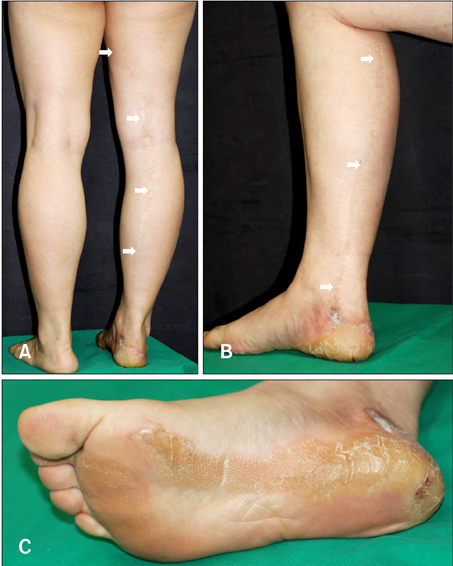Ann Dermatol.
2012 Nov;24(4):480-481. 10.5021/ad.2012.24.4.480.
Adult Onset of Nevus Unius Lateris
- Affiliations
-
- 1Department of Dermatology, Chung-Ang University College of Medicine, Seoul, Korea. drseo@hanafos.com
- KMID: 2266050
- DOI: http://doi.org/10.5021/ad.2012.24.4.480
Abstract
- No abstract available.
Figure
Reference
-
1. Happle R, Rogers M. Epidermal nevi. Adv Dermatol. 2002. 18:175–201.2. Haberland-Carrodeguas C, Allen CM, Lovas JG, Hicks J, Flaitz CM, Carlos R, et al. Review of linear epidermal nevus with oral mucosal involvement--series of five new cases. Oral Dis. 2008. 14:131–137.3. Su WP. Histopathologic varieties of epidermal nevus. A study of 160 cases. Am J Dermatopathol. 1982. 4:161–170.
Article4. Mazereeuw-Hautier J, Thibaut I, Bonafé JL. Acantholytic dyskeratotic epidermal nevus: a rare histopathologic feature. J Cutan Pathol. 2002. 29:52–54.
Article5. Fox BJ, Lapins NA. Comparison of treatment modalities for epidermal nevus: a case report and review. J Dermatol Surg Oncol. 1983. 9:879–885.
Article



